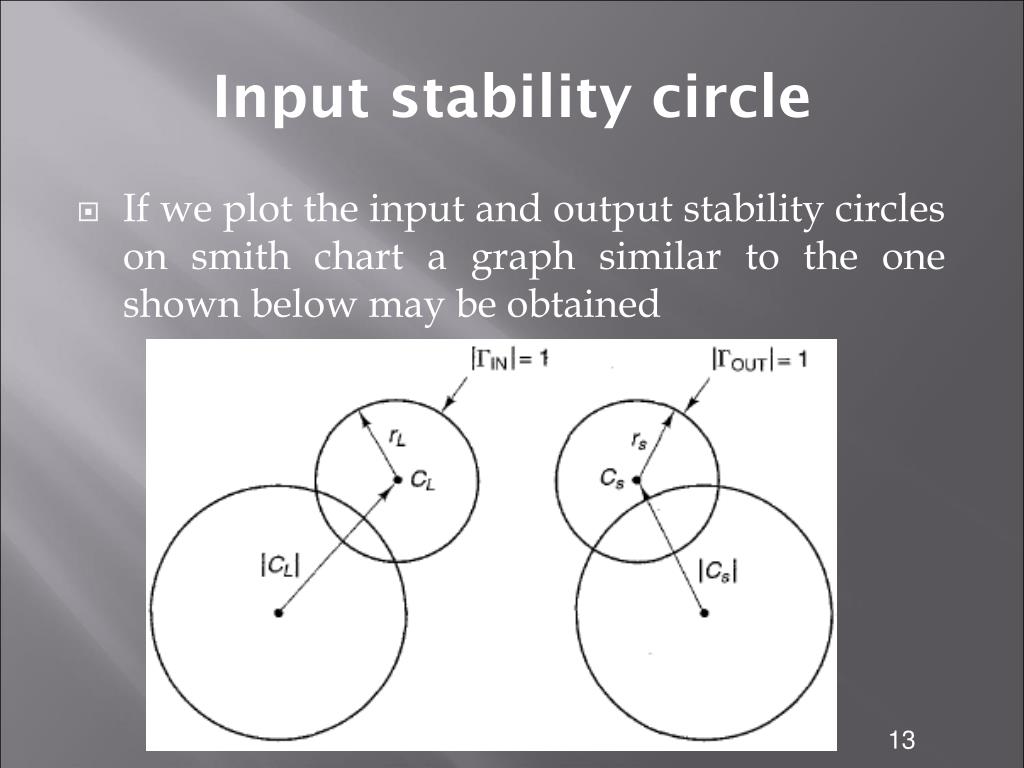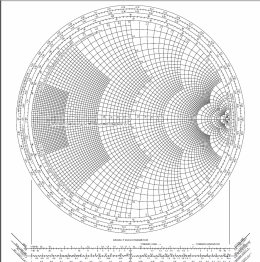

- #Stability circles on smith chart full
- #Stability circles on smith chart software
- #Stability circles on smith chart series
Based on this scaling, smith charts can be categorized into three different types Smith chart is plotted on the complex reflection coefficient plane in two dimensions and is scaled in normalised impedance (the most common), normalised admittance or both, using different colours to distinguish between them and serving as a means to categorize them into different types.
#Stability circles on smith chart software
As a result of this, most RF Analysis Software and simple impedance measuring instruments include smith charts in the display options which makes it an important topic for RF Engineers. Smith chart can be used to display several parameters including impedances, admittances, reflection coefficients, scattering parameters, noise figure circles, constant gain contours and regions for unconditional stability, and mechanical vibrations analysis, all at the same time. However, the Smith charts method of displaying data have managed to retain its preference over the years and it remains the method of choice for displaying how RF parameters behave at one or more frequencies with the alternative being tabulating the information. The layout after resolution of the rubber band lines is given below.It was originally developed to be used for solving complex maths problem around transmission lines and matching circuits which has now been replaced by computer software. Also notice that the sweep range for the amplifier gain and match is from 2000 to 2800 MHz, but the sweep range for the stability analysis is from 100 to 6000 MHz, the entire range for which S-parameter data was available. Notice that the entire Smith chart region, which represents any possible passive load, is stable for both the input and output.

The results after optimization of the lengths of lines in the input and output matching networks are shown in the Genesys screen shown above. The remaining microstrip models comprise the matching networks which were optimized for 10dB of gain and best flatness. The microstrip tee and transmission line models are added to account for the physical structure which is necessary to add the resistors to the amplifier. These capacitors and resistors are evident in the schematic shown above. These will also be a part of the bias scheme. To further enhance stability, resistors to RF ground are added at the input and output.
#Stability circles on smith chart series
Therefore, we will use a series capacitor at the input and output with the smallest value which does not disturb the desired amplifier. In this case, since the circles above represent the lowest frequency and since the top half of the Smith chart is inductive, stability is enhanced by insuring that the device is capacitively terminated at low frequencies. Similar conditions should be satisfied at the output. To insure stability, the impedance presented to the device at its input terminal should avoid the shaded region of the input plane stability circles.
#Stability circles on smith chart full
Click the Zoom Maximize button to see the full range of data. Each circle locus is specified via a marker, which selects which frequency is of interest. The shaded regions of the Smith chart represent regions of instability. Shown above are the input and output plane stability circles for an HP/Avantek AT41586 bipolar transistor biased at 8 volts and 25 mA. Stability should be examined over as broad a frequency range as possible, and not just over the range desired for the amplifier. The first step is to examine the stability characteristics of the selected active device before adding additional circuitry. This example illustrates stability circles and designing an amplifier for stability.


 0 kommentar(er)
0 kommentar(er)
